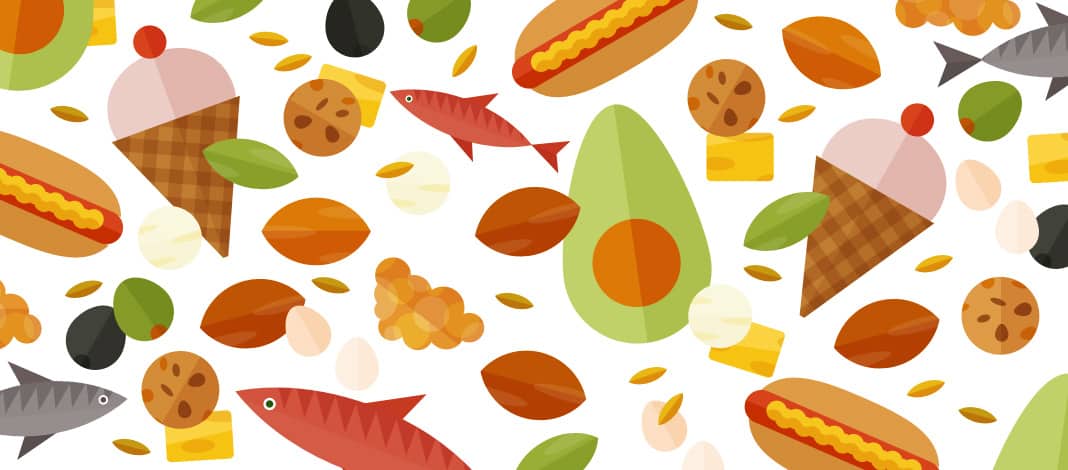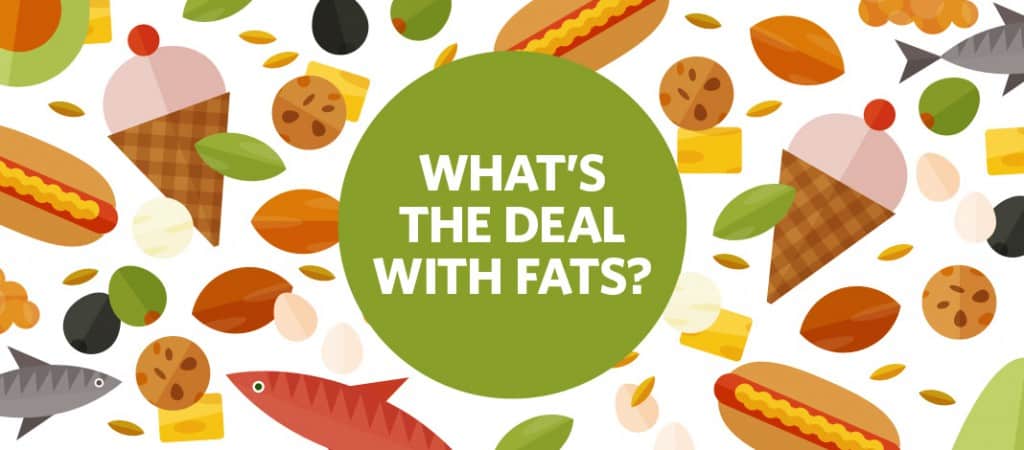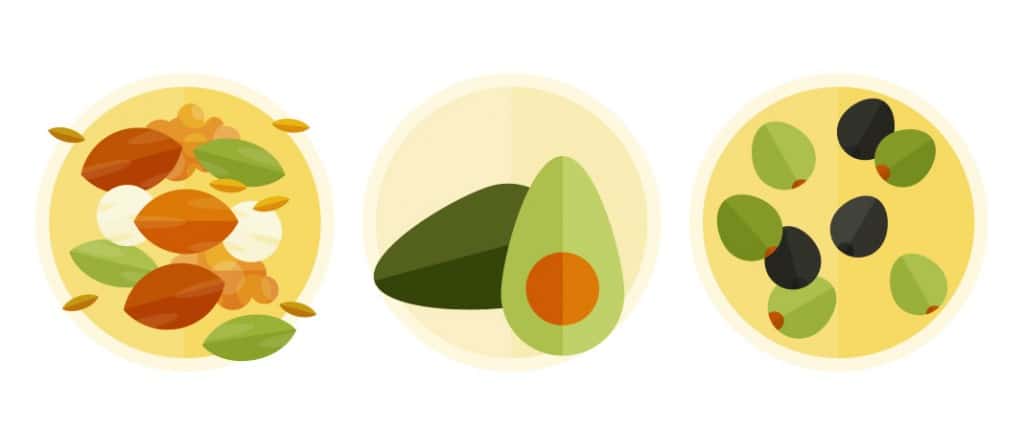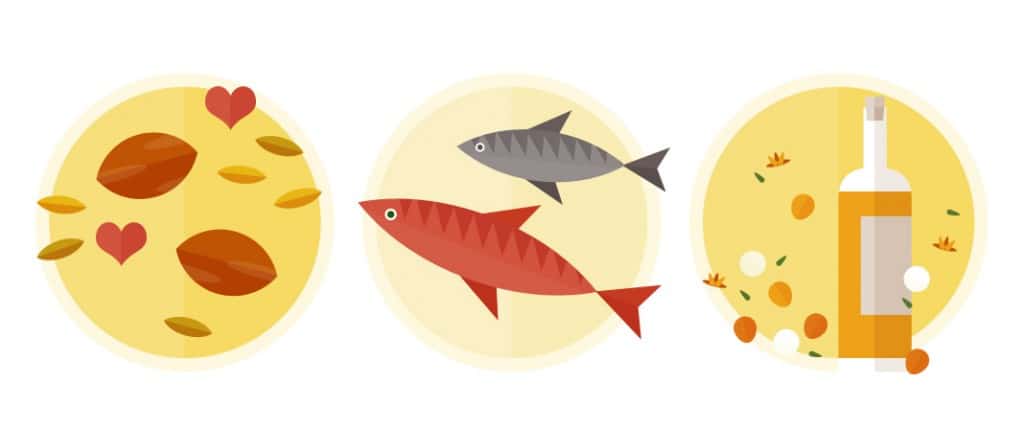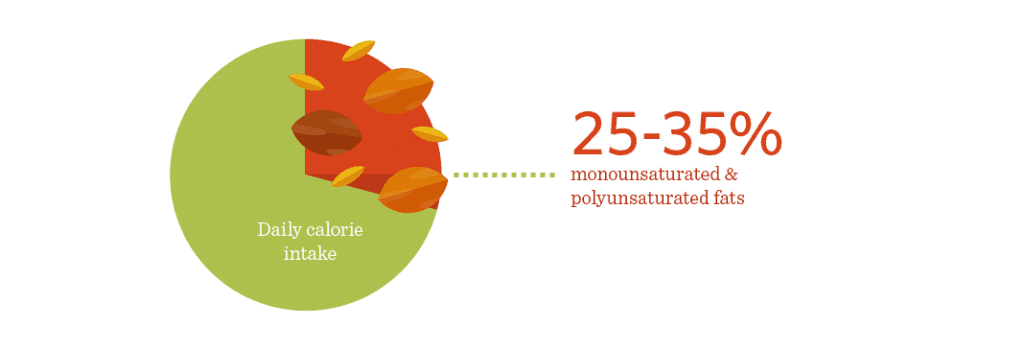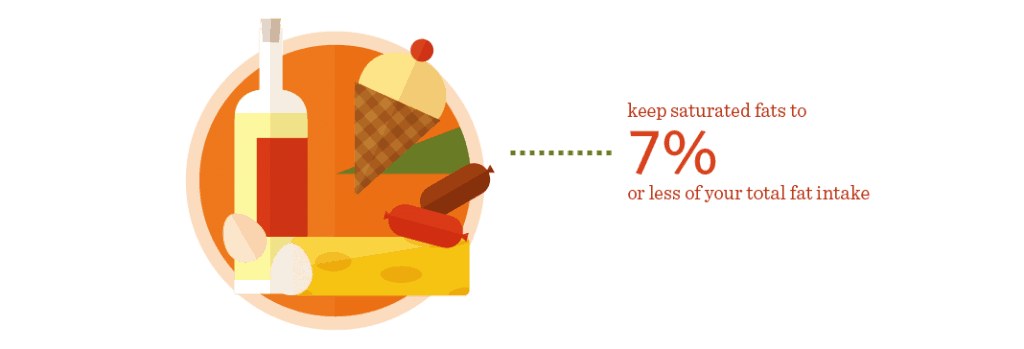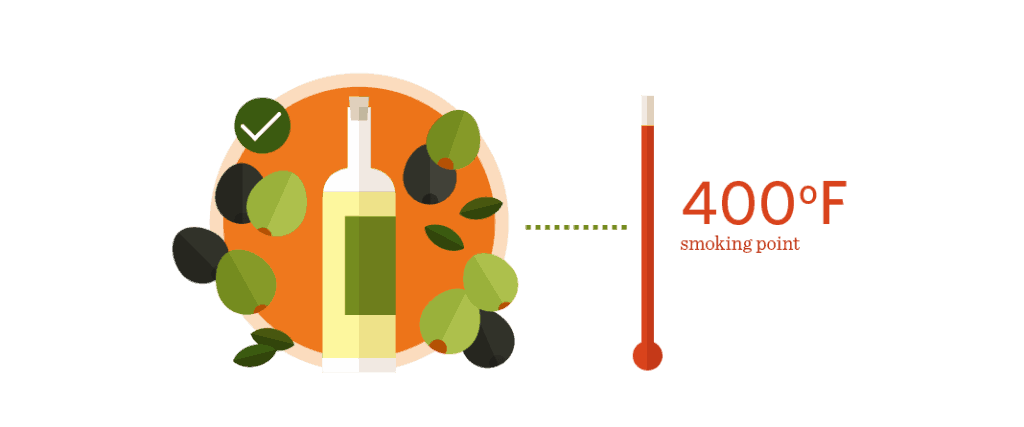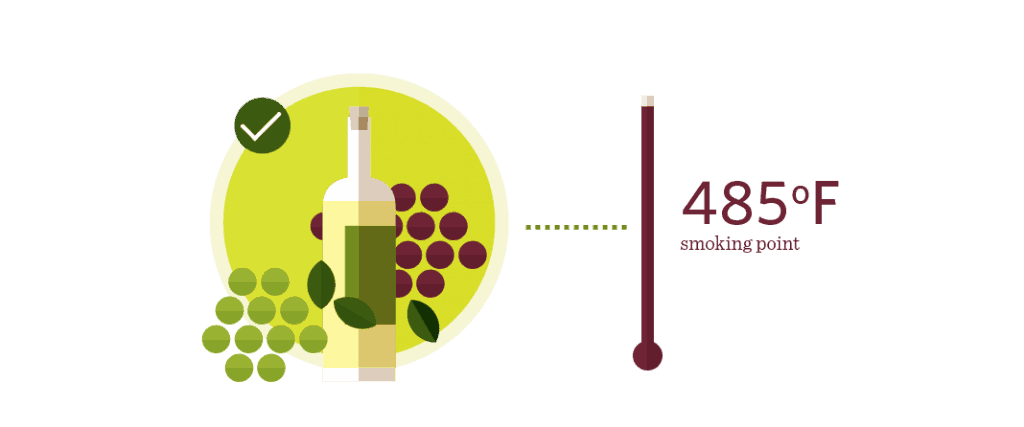The days of the ‘No-Fat Nineties’ are far behind us, and yet the fat debate still seems to be two sided: good fats vs. bad fats. No matter what side you’re on, fats deliver Essential Fatty Acids (EFAs) to your diet that your body can’t normally produce on its own. And they’re important too—EFAs aid in brain development, skin health, eye sight, weight control, and more. Here’s the skinny on what you should eat, what you should avoid, and the best sources of the truly good stuff.
WHAT’S GOOD
Monounsaturated fats—known as MUFAs to diet connoisseurs—are plant-based fats that, when eaten in moderation, can help reduce bad cholesterol levels in your blood and lower your risk of heart disease and stroke. They happen to be found in some of the most delicious foods like avocados, olives, nuts and seeds, and even dark chocolate, so there’s no excuse NOT to fill up on this good fat. Monounsaturated fats are usually good sources of vitamin E, which studies show can do everything from prevent cancer, keep Alzheimer’s at bay, and even help fight aging. But know this: all fats contain nine calories per gram, even the good ones, so try not to pour with a heavy hand if you’re watching your weight.
Polyunsaturated fats harbor the same health benefits as the chemically-similar MUFAs. But they also include omega-6 and omega-3, both essential for brain function, normal development, reduced risk of blood clots and lower levels of fat in the blood that your body doesn’t produce on its own. You’ll find plenty of polyunsaturated fats in fatty fish like salmon, mackerel, and trout, walnuts and sunflowers, and certain vegetable oils like soybean, corn, and safflower.
Monounsaturated and polyunsaturated fats should make up most of your daily fat intake which, according to the American Heart Association, should amount to 25-35% of your daily calories.
WHAT’S BAD
Saturated fats on their own raise the level of cholesterol in your blood, which increase your risk of heart disease and stroke. It’s no surprise that many foods that contain saturated fats are also high in cholesterol, so you might be giving your heart health the one-two punch without even knowing it. You’ll find it in meat, butter, ice cream, or any other source of animal fats, or in highly saturated vegetable fats like coconut oil, palm kernel oil, and cocoa butter. How can you tell if you’re dealing with a saturated fat? They’re usually solid at room temperature. Here’s the hard truth: while meats and dairy contain saturated fats, they still bring important nutrients to your daily diet, so try to keep saturated fat less than 7% of your total fat intake.
Trans fats don’t only hurt your heart—besides clogging your arteries, they’ve also been linked to certain cancers, and not to mention one of the biggest culprits of the obesity problem. In fact, researchers from Harvard School of Public Health believe eliminating trans fats from the American diet could prevent 250,000 heart attacks every year. Sure, you’ll find trace amounts in meats and full-fat dairy, but almost all the trans fats we consume come from hydrogenated or partially hydrogenated oils that were solidified to extend their shelf life. Prime suspects include fast food, packaged foods like microwave popcorn, margarine, cookies and crackers, and even granola bars. Avoiding them all together is nearly impossible, so do your best to avoid packaged foods as much as possible and swap your tub margarine for olive or canola oil.
OIL FOR OIL
Clean up your cooking with these five healthy fat alternatives
INSTEAD OF: VEGETABLE OIL
EAT: OLIVE OIL
Make like the Mediterraneans do and start cooking with olive oil, the quintessential MUFA and the easiest way to up your intake of the good fats that promote anti-aging and good heart health. Olive oil is also full of healthy antioxidants and anti-inflammatory polyphenols. Its smoke point tops out at 400 degrees, making it great for sautéing, salad dressings, dips, and sauces. Beware: light and air can affect the taste and possibly health-promoting nutrients of olive oil, so be sure to store it in a dark, room-temperature cupboard or the refrigerator.
INSTEAD OF: SALAD DRESSING
EAT: WALNUT OIL
Rich in omega-3 fatty acids, this nutty oil is perfect for livening up homemade salad dressings and adding a rich finishing touch to cooked veggies. Walnut oil also harbors a healthy amount of omega-9 (important for artery health) and omega-6 fatty acids—just be sure not to use it at too high a temperature.
INSTEAD OF: BUTTER OR MARGARINE
EAT: COCONUT OIL
Coconut oil is made up of approximately 90% saturated fat, but research suggests it’s actually metabolized in the body like unsaturated oil, most likely because it comes from a plant and not an animal. It’s a good substitute for butter especially in vegan diets due to its texture. It’s also commonly used as a skin-softening beauty remedy.
INSTEAD OF: PEANUT OIL
EAT: GRAPESEED OIL
Grapeseed oil can withstand temperatures up to 485 degrees, making it a great choice for grilling, frying, and baking. It has a light, neutral flavor, so it won’t overwhelm even the most delicate of dishes, and it’s chock full of antioxidant-rich vitamin E—which most of us don’t get enough of in our daily diet.
INSTEAD OF: PROCESSED ASIAN FLAVORING
EAT: TOASTED SESAME OIL
High on polyunsaturated fat, a little goes a long way thanks to sesame oil’s strong taste. Skip the takeout menu and use this healthy oil in Asian-style cooking, such as stir frying or seasoning sauces.
